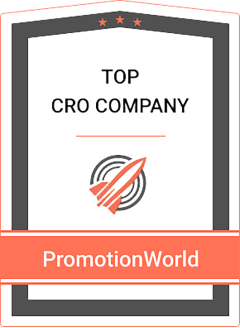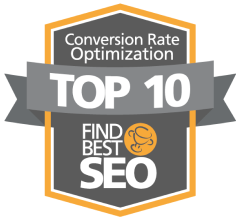SEO is one of the most important aspects of getting your oil and gas, technology, retail, or cybersecurity website to the top of the search engines. If you’re investing in SEO, you’re taking advantage of an opportunity to reach new customers and grow your business.
This blog will teach you how to create an SEO strategy for your business. We will cover everything from analyzing your competitors to conducting proper on-page optimization.
What Is SEO Strategy?
SEO stands for search engine optimization. It is optimizing your website to rank higher in organic search engine results. SEO strategy involves changing the structure, content, and technical elements to increase its online visibility.
Search engine optimization is an ongoing process and requires continuous work to maintain high rankings on search engines such as Google, Bing, and Yahoo. Your SEO plan should include keyword research, competitor analysis, creating content clusters, conducting proper technical SEO, and link building.
Ranking organically evolves as competitors work to improve results. The key to an effective search engine optimization strategy is taking a long-term view and remaining diligent.
Your SEO Strategy Matters
Investing time into creating a sound SEO strategy will help you get better results from your search campaigns by driving more targeted traffic to your website, increasing conversions, and improving brand recognition.
What you do with SEO matters because it helps offset changes with other traffic generation techniques you might use inside your business. Examples of changes that lead to traffic losses that SEO can offset:
- A pay-per-click campaign that works today may stop producing results when the current algorithm changes.
- Declining organic social media reach and engagement yields lower traffic than in years past.
Google runs multiple adjustments to its search engine algorithms each year. However, you can stay on the first page of the search engine results pages for months and years if you run an SEO plan that adheres to Google’s basic principles.
Step-by-Step Guide To Creating an Effective SEO Strategy
Now that you understand what an SEO strategy consists of and how it helps you build a continuous traffic generator let’s discuss building your organic SEO strategy.
Benchmark Your Current SEO Performance
You will want to understand how your SEO results change over time. To do this, you must first benchmark your SEO performance. Here is how to go about benchmarking.
Use tools like SEO PowerSuite, SEMrush, or Ahrefs to check your SEO performance and get insights into how to improve it. A tool like Ahrefs can help you analyze your SEO visibility, track keyword ranks, optimize content for SEO, and monitor backlinks.
These SEO tools produce reports that help organize performance metrics like search engine positions and click-through rates. With SEO PowerSuite, for example, you can see an overall SEO score for your website, as well as detailed insights into specific tasks like content optimization and link building.
Google Analytics (GA) is a powerful tool that tracks your organic search traffic and keyword rankings. With GA, you will get information such as the number of visits from organic searches, top-performing keywords, and more. The data can help you determine which SEO techniques work and what needs improvement.
Analyze Your Competitors’ SEO Strategies
Aim to achieve a bird’s eye view of what your competitors already do from an SEO perspective. It will help you to develop SEO strategies that will outrank them.
Research your competitors’ websites and their organic search rankings. It can give you an idea of which keywords they target and how they achieve their rankings. Explore long-tail keywords when analyzing competitor keyword research. Long-tail keywords often have less competition and can produce targeted qualified leads.
You can also gain a clearer picture of how different keywords perform by digging into search query reports or leveraging tools such as SpyFu to compare other sites’ rankings in terms of keyword distribution.
Remember to include search intent when analyzing competitor keyword research. Search intent is the goal behind search queries. It encompasses their desires, motivations, and expectations when conducting a web search. Knowing what users expect from search queries will ensure that you create content that meets their needs and expectations, resulting in more successful search results.
You will also want to evaluate the backlinks that your competitors have built up over time. Analyzing these links can provide valuable insights into how effective their link-building strategies are and where they get their most authoritative links. Further evaluation of the anchor texts used in these backlinks can uncover which keywords help with ranking high in organic search results.
Finally, please pay attention to any changes competitors make to their website design. Please note how they utilize visuals, fonts, colors, layouts, and other elements within their website. These can all have an impact on how users experience the site and whether or not they stay for long periods.
Set Your Goals and KPIs
SEO goals should be measurable and achievable, with clearly defined metrics to measure success or failure. SEO KPIs (key performance indicators) are metrics to help you measure SEO performance against your SEO goals. Consider the following seven KPIs to track across your SEO campaigns.
Organic Traffic
A KPI to keep an eye out for is tracking the amount of organic traffic coming to your website. The number lets you know how much you’re getting out of all the hard work you put into optimizing your pages and content for better rankings.
Average Time On Site
The time a user spends on each page of your website can provide valuable insight into how engaging users find each page and overall experience when visiting your site.
Bounce Rate
Measuring bounce rate is one of the SEO rankings factors that lets you know the percentage of people who view a single page and then leave instead of navigating elsewhere on your site. You can also measure whether they complete an action, such as making a purchase or signing up for an email list.
Pages Per Visit
This metric shows how many pages users view per visit to your site. It gives insight into how they engage with the content and whether they find it useful or entertaining. These factors determine whether users continue to explore the site or immediately leave it altogether (bounce rate).
CTR (Click Through Rate)
Click-through rate measures how visitors follow through with clicking links from search engine results after queries. You will measure it compared to your site’s total impressions on Google.
Backlinks Profile
Quality backlinks from reputable websites point towards legitimacy, authority, and trustworthiness. It shows Google that other reliable sources link to your site as a beneficial resource. It will help boost reputation and rank authority significantly over time.
Mobile Readiness
Optimized pages displaying correctly across different devices will help you achieve maximum visibility. Doing well in this area provides potential ranking benefits due to happy visitors staying longer & exploring more pages.
Define Your Primary Keywords and Pillar Pages
To build an effective SEO content marketing strategy, you must define your primary keywords and pillar pages. It will help establish a connection between your website content and improved search engine rankings.
Start by identifying one or two highly relevant and popular primary keywords with decent search volume. Primary keywords are those terms that best describe your business, its service offerings, or specific topics related to you.
Select these keywords based on relevance, popularity, and search volume. You’ll want to focus on one or two primary keywords that will help you stand out above competitors in search results.
Next, create pillar pages that are the foundation of your content marketing strategy. Pillar pages provide an overview of a particular subject area within your field of expertise. They act as a resource guide for visitors searching for answers online.
Identify essential topics that should have their own pages. Then link to these pages from your pillar pages to create a hub that thoroughly explains the page’s topic. Include links on the pillar page that direct visitors toward products and services which can help fulfill their needs more precisely.
Find Long-tail Keywords and Define Cluster Content
Finding long-tail keywords and defining cluster content is essential to an effective SEO strategy.
When searching for long-tail keywords, look for specific phrases that contain more than three words. These will give you a better understanding of what interests your visitors. They provide an opportunity to create creative content solutions around each phrase.
Once you’ve identified the primary long-tail keywords related to your business, it’s time to define cluster content that aligns with each phrase. Cluster content takes the form of strategically structured groupings of web pages or articles all centered around one particular theme. For example, they might include ‘Oil Rig Safety’ or ‘Offshore Oil Drilling.’
Cluster content allows search engines to decide how to rank your website quickly. It will enable you to lead site visitors further down your sales funnel toward conversion.
When crafting this type of content, think about how you can structure the pages and topics so that each page answers different questions about the primary subject. Doing so gives users multiple points of access to relevant information.
Keep in mind that you’re increasing organic traffic and chances for customer engagement by providing comprehensive coverage on any given issue.
Audit Your Site’s Existing Content
Auditing your site’s existing content can help you gain valuable insights into what resonates best with readers. It will also identify opportunities for improvement as your business continues to grow and evolve. Regularly reviewing every aspect of your website will improve the user experience for all visitors while positioning you as a trusted source in your field.
The first step in any content audit is to review the overall structure of your website. Take a fresh look at how you organized the topics. Decide if the design still makes sense. Are there any outdated topics to update or remove?
Next, analyze the keyword usage within each page of your website. Do the keywords you’ve chosen accurately reflect the purpose of each page and its content? Identify which terms appear more frequently than others. Consider ways to add additional related keywords throughout pages where appropriate.
Take stock of any images used throughout your site’s pages. Tag them with accurate descriptions, relevant titles, and alt tags so they appear correctly during searches. Check that all URLs link back correctly to active pages. Fix broken links or redirects that happen as websites evolve.
Here are a few additional tips for auditing your website’s existing content.
Utilize analytics data to gain insights into the effectiveness of your content. Analyze page views, time spent on the page, and bounce rates to understand better how visitors interact with each page.
Make sure all pages have an appropriate call-to-action (CTA). Keep each CTA clear and goal-oriented. They should encourage users to move further down the conversion funnel.
Edit pages for readability. Break text up into digestible chunks, presented in bulleted or numbered lists. Use keywords naturally throughout your content.
Review your site’s overall tone and ensure it accurately reflects your brand’s personality and your target audience’s interests and needs. Consider adding interactive elements like polls or videos to keep readers engaged on each page.
Build Out Your Topic Clusters
We discussed the importance of defining cluster content above. Here are tips for writing each blog post as you build your topic clusters.
Create an SEO-friendly content architecture that allows search engines to easily identify the core topics, subtopics, and related keywords. For each page or article, focus on answering questions about your primary topic in-depth. Provide practical advice to readers and ensure accuracy with supporting facts and figures from reliable sources.
Optimize a blog post for SEO by including relevant keywords naturally within the text. Include various related terms to help search engines better understand the context and intent of each page.
Include internal linking strategies to link each blog post on your website together. You can use external links to relate your content to trusted sources and enhance SEO value.
Get Your On-page SEO Right
On-page SEO is optimizing your web pages for search engine result pages (SERPs).
SEO-friendly meta tags and meta descriptions, keywords, SEO-friendly URLs, SEO-optimized images, and SEO copywriting are all crucial components of a proper SEO strategy. Note that off-page SEO includes strategies like link building, local SEO, guest blogging, and social media marketing.
One of the most vital aspects of high-quality page content is good page titles. A page title will summarize the topic discussed while remaining concise and accurately memorable. Doing this helps ensure that users and search algorithms understand its relevance when appearing in SERPs.
Additionally, remember to include keyword phrases throughout the text, as this helps increase relevance and gives further context to your web pages.
Headers are another critical factor when creating website content. Use H2 and H3 headers throughout any page to break up long blocks of text. It makes it easier for users to find relevant information without reading through everything or scrolling endlessly.
Use meta descriptions on each page. These provide a summary of a web page’s contents and act as additional signals for users and crawlers viewing SERPs. Sprinkle the main keyword for the page in each description.
Image Alt-text is also crucial. Including this provides further details about what images look like as search engine crawlers scan your website.
Structured markup is something else you need to consider. Microdata such as Schema or OpenGraph tags allows certain elements such as products, reviews, and articles to stand out from others on SERPs. Using these correctly increases visibility, leading to increased click-through rates from potential customers.
Remember to think through the creation of URLs. Make sure each page employs a URL address that accurately reflects its topic. It will help both users and crawlers easily understand where it fits into your overall site structure. Use keywords if possible but keep them short.
Find and Fix Technical SEO Issues
It would help if you ran SEO tests regularly to uncover any technical SEO issues. Google search console is a starting point. It will offer insights into crawl errors and broken links and provide information on how often your pages appear in SERPs.
Mobile responsiveness is a technical SEO factor. A responsive website will adjust to the device’s size, whether a visitor uses a laptop or a mobile phone. The process includes scaling images correctly and making menus easy to navigate.
Consider how your website looks on different devices and how quickly it loads. A website you need to optimize for loading on mobile devices may take too long. You will frustrate visitors who don’t have the patience to wait for pages to load while exploring your site.
Optimizing your website with accelerated mobile pages (AMP) technology is one way to address this issue. It helps your content load quickly, even on slower connections.
Pay attention to the user experience when creating a responsive design. Making sure all elements are accessible and easy to interact with will go a long way toward improving engagement. It will increase conversions from mobile users.
Use Google Analytics alongside other testing tools to track whether your mobile design successfully creates positive surfing experiences.
Site speed is a significant factor when it comes to technical SEO. Slow loading times can lead to poor user experience. A slow website will hurt Google search engine rankings and, ultimately, conversions and sales. Therefore, it’s essential to make sure your website minimizes loading time and maximizes performance across all devices.
The first step in achieving optimal site speed is to reduce the size of your page elements (e.g., images and videos) by compressing them and enabling browser caching. The cached content will load pages faster for returning visitors.
Optimizing code with minification techniques can reduce page loading time. It removes additional characters not necessary for understanding the code structure.
It’s also worth considering server response times when improving your website’s overall performance. Visitors may only abandon their sessions if a web page takes less time to respond from the server. You’ll lose prospects before they engage with your content or purchase what you sell.
Use a reliable web host for your website. Consider using a content delivery network (CDN) if you need optimal global coverage for hosting static assets like images or scripts.
Try using a tool like Google PageSpeed Insights to test how quickly your website loads on different devices. Use the test results to work on improvements.
Other issues to find and fix include the following:
- Incorrect or missing Robots.txt: It is a configuration file that search engine crawlers read to find out which parts of your website they should index.
- Duplicate content: Duplicate content is bad for SEO, as search engines may penalize websites for putting out identical or nearly identical content.
- No HTTPS security: Over time, the web shifted toward using Hypertext Transfer Protocol Secure (HTTPS) as a secure communication protocol.
- Missing XML sitemaps: Search engines use this file to index your website accurately and quickly. They come in handy when submitting new or updated pages to search engines. You can use a sitemap to provide the necessary information about changes made since the last crawl.
Conclusion
SEO is an essential part of any digital marketing strategy. Following the steps in this SEO guide will give you a solid foundation as you build an SEO strategy for your site.
SEO takes time and requires continuous effort. There are no shortcuts or instant solutions when it comes to organic SEO. However, with dedication, research, testing, link building, and patience, you can create an SEO strategy that yields long-term results for your business’s online presence.
Would you like to outsource this work so you don’t need to create your SEO strategy? Contact us today. We will answer all your questions and show you the difference we can make with your search engine optimization strategy.

Hal Green
Director
Hal H. Green is a marketing executive and entrepreneur in the energy industry with more than 20 years of experience in starting and managing technology companies. His particular focus is business strategy, effective selling practices, and field marketing. He has a diverse portfolio of achievements, which span all areas of the hydrocarbon supply chain – from upstream exploration through downstream refining & petrochemical.
Mr. Green attended Texas A&M University, where he received a Bachelors in Electrical Engineering. He later earned an MBA in Information Management from the University of Houston. As Director of Manufacturing Systems for Setpoint, an advanced process control firm in Houston, Mr. Green effectively managed the P&L of this consulting practice. After Aspen Technology acquired Setpoint in January 1996, he continued as Director of Business Development for the Information Management and Polymer Business Units. Throughout his career, Mr. Green has been a proven thought leader, publishing articles in major industry journals.
In 2004, Mr. Green founded Advertas, a full-service marketing and public relations firm serving clients in energy and technology across the energy supply chain – upstream, midstream, downstream and power. In 2009, Geophysical Insights retained Advertas to be their outsourced marketing and business development functions. Dr. Tom Smith, President/CEO of Geophysical Insights, appointed Mr. Green as Director of Marketing and Business Development, in which capacity he still serves today.

Laura Cuttill
Co-Founder & CMO
Laura A. Cuttill is a strategic and operational leader with a demonstrated ability to fuse business, financial, and technology interests into streamlined, profitable operations. Armed with a degree in marketing from Texas A&M University, Ms. Cuttill began her career in the Schlumberger Information Solutions department, working on identity management roll-out projects for Chevron and ExxonMobil.
In 2004 she joined Hal Green as a co-founder of Advertas, adding her organizational, analytical, and creative problem-solving skills to the team. In 2010 she left Advertas to co-found the identity management software company, 2FA, Inc. As COO / CMO for 2FA, she helped lead the company from concept to a 75% market share in target verticals for two factor authentication in four short years. After selling the business to Identity Automation in 2016, she returned to Advertas, continuing to support clients in the energy and process industries. She serves her clients with a unique vision of using cutting-edge software and marketing practices as a foundation to drive business growth.








